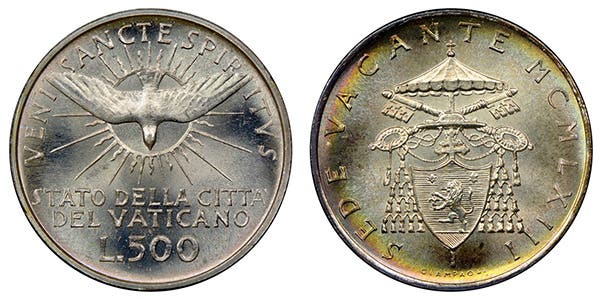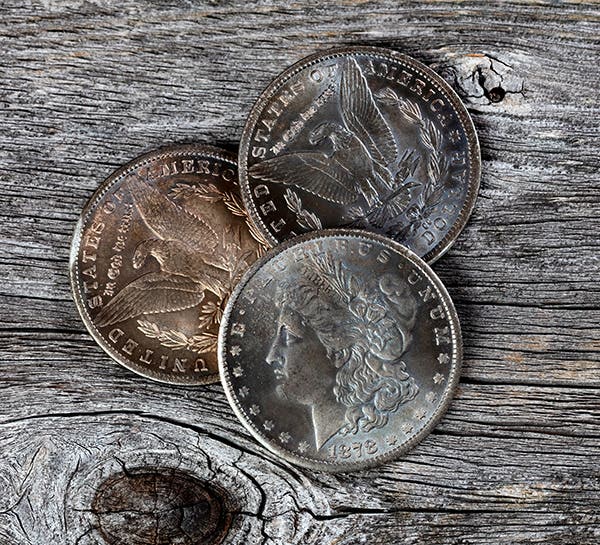Net Grading Explained
I was mentioned in a recent Viewpoint article titled “Grading: A Tale of Two Coins.” Without examining the coins that were discussed for myself, I’ll need to reserve any judgment on…
I was mentioned in a recent Viewpoint article titled “Grading: A Tale of Two Coins.” Without examining the coins that were discussed for myself, I’ll need to reserve any judgment on the author or the opinion of his dealer and the third-party grading services (TPGS) involved. The writer requested that I write a refresher column about the net grading of coins. Those who know me personally or have read my columns over the years must realize that I am no proponent of net grading; however, in this column I shall try to treat the subject as an uninvolved observer.
One common adjectival use of “net” describes something remaining after deductions. So, there are some folks who rightly believe that all grading is net grading! They reason that, once a coin is struck, it begins to deteriorate in different ways due to environmental causes, friction wear and marks from mishandling or circulation. Thus, any grade assigned to a coin is a “net” grade. I view this as more of a philosophical concept that encourages a good discussion, so let’s give in on that point: All grading is net grading. Now, I’ll suggest you forget that concept.
The most common instance of net grading occurs when a coin’s actual condition of preservation from the time it was struck – its “true” grade as determined by a knowledgeable, experienced numismatist of the coin type – is lowered to reflect any of its disturbing attributes. That can include virtually anything a net grader does not like. Since we all can find certain things we find disturbing on most coins, any of the usual high degree of subjectivity involved when grading a coin is increased. Alterations to its surface is just one problem occurring in varying degrees of severity. Some folks tolerate environmental damage such as a porous surface from old corrosion or dark spots on copper more than rim nicks and minor damage such as small scratches. In all cases of impairment, this form of net grading is essentially practiced by collectors of early copper who have devised their own grading system. One plus to their system is that it is often much more conservative than the commercial grading done by most others. Net graders of copper grade a coin more strictly to begin with using standards closer to the way grading was practiced decades ago when Mint State indicated no trace of wear. Then they net grade the coin down due to problems that influence its value. What we may consider an extreme example (it is not) of this “net” approach happens when a Mint State coin is only graded AU-something because of impaired luster. That may explain a recent discussion in an internet forum of a 1794 copper net graded EF-45 by a Large cent expert and MS-62 by Professional Coin Grading Service graders. In my opinion, and probably that of anyone with access to a published grading guide other than the EAC’s book, the coin is a perfect example of an About Uncirculated coin.
We can also prove that net grading is practiced on occasion in the commercial market and at the TPGS’s in an attempt to align a coin’s grade to provide an indication of its value. The TPGS’s are not so obvious when net grading a coin. While copper collectors/dealers net grade down, commercial net grading can go either up or down! Some grades are lowered in a similar fashion as the copper collectors. More often, there are instances where a commercially graded coin is given a higher grade than its actual condition of preservation. To be accurate, should I call this “a reverse net” grade? Thus, coins that were formerly considered to be strictly AU are now commonly graded in the low Mint State ranges. This practice has been given the name “Gradeflation.” Additionally, some coins are “reverse net graded” for their rarity or attractive eye appeal. Both these attributes override a coin’s actual condition. While this increases subjectivity into the grading equation, it is a necessary way to indicate a coin’s worth. Perhaps it is easier for most graders to judge a coin’s beauty than to mentally calculate the amount, location and severity of its defects, let alone the amount and cause of any friction to its design.
As of today, no one has been able to tell me who devised the net grading system for early copper; however, copper collectors were part of the group of numismatists who forever tied the value of a coin to its grade, giving us the “apples” and “oranges” conundrum we have today. So, in each case of the apparent net grading referred to by the author of the Viewpoint, is it any wonder that a novice cannot understand how a coin appearing to be one grade of preservation “by the book” is assigned a higher or lower grade by the “experts” involved, depending on the system of grading they choose?








